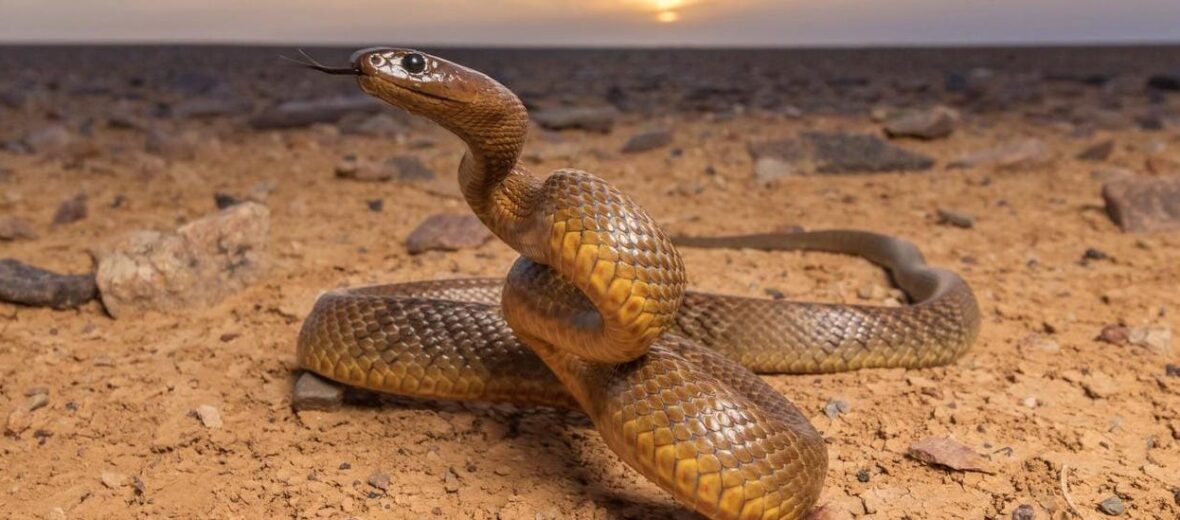
Touted as being one of the most venomous snakes in the world, of course living in Australia, it’s the inland taipan. They also go by the names of the western taipan, the small-scaled snake, or the fierce snake. They are endemic to semi-arid regions of central east Australia. Aboriginal Australians living in those regions named the snake Dandarabilla. Due to their stable numbers, these snakes are listed as Least Concern by the IUCN.
First the Stats…
Scientific name: Oxyuranus microlepidotus
Weight: Up to 6 lbs.
Length: Up to 8+ feet
Lifespan: Up to 15 years
Now on to the Facts!
1.) It is estimated that one bite possesses enough lethal toxicity to kill at least 100 fully grown men and, depending on the nature of the bite, it has the potential to kill someone in as little as 30 – 45 minutes if left untreated!
2.) They are an extremely fast and agile snake that can strike instantly with extreme accuracy, often striking several times in the same attack, and it envenomates in nearly every case!
3.) These snakes are typically shy and steer clear from human contact, so bites are not that common. But they will gladly defend themselves if provoked, cornered, or threatened.
4.) Taipans have the ability to lighten or darken their coloration based on the temperature. For example: lighter for hotter days to help shield from the heat of the sun and darker on colder days to allow more heat in.
5.) During colder months they will hunt during the day, and they will hunt at night during hotter months. Making them seasonally diurnal and nocturnal.
But wait, there’s more on the inland taipan!
6.) Their diet consists of small mammals, like rodents, and they will also take birds.
7.) The primary predators of the ‘fierce snake’ are monitor lizards and the king brown snake.
Did you know…?
The inland taipan can strike up to 8 times in a single flurry!
8.) Females lay 12 – 24 eggs in the crevices of rocks or inside abandoned burrows, making these snakes oviparous.
9.) Eggs hatch after a 2 month incubation.
10.) Snakelets are born venomous and precocial (self sufficient).
Now a Short Inland Taipan Video!
Also, check out the Critter Science YouTube channel. Videos added frequently!
Want to suggest a critter for me to write about? Let me know here.



